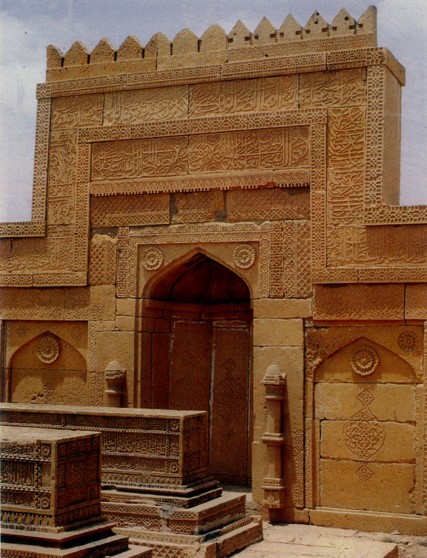Introduction
Near the apex of the delta of the Indus River in province of Sindh is an enormous cemetery possessing half a million tombs and graves in an area of about 10 km2. Massed at the edge of the 6.5 km-long plateau of Makli Hill, the necropolis of Makli which was associated with the nearby city of Thatta, once a capital and centre of Islamic culture testifies in an outstanding manner to the civilization of the Sindh from the 14th to the 18th centuries. The vast necropolis of Makli is among the largest in the world. Kings, queens, governors, saints, scholars, and philosophers are buried here in brick or stone monuments, some of which are lavishly decorated with glazed tiles. Among the outstanding monuments constructed in stone are the tombs of Jam Nizamuddin II, who reigned from 1461 to 1509, and of lsa Khan Tarkhan the Younger and of his father, Jan Baba, both of whose mausolea were constructed before 1644. The most colourful is that of Diwan Shurfa Khan (died in 1638). The unique assemblage of massive structures presents an impressive order of monumental buildings in different architectural styles. These structures are notable for their fusion of diverse influences into a local style. These influences include, among others, Hindu architecture of the Gujrat style and Mughal imperial architecture. Distant Persian and Asian examples of architectural terra-cotta were also brought to Makli and adapted. World Heritage Site in a professional manner.





